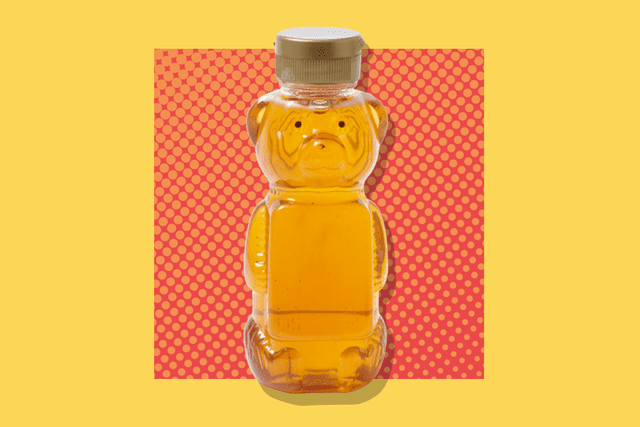Is Crystallized Honey Safe to Eat?
Don't throw out that bottle of semi or completely solid honey just yet; you can revert crystallized honey into liquid honey with one simple tip.

You're making your favorite dish that calls for honey, but when you pulled the jar or the bottle out from the pantry, you noticed that the clear golden liquid turned into a semi- or fully solid. It seemed impossible to squeeze out or pour the honey, and you might also question whether it is still safe to eat with its stark appearance change.
But all is not lost — you can transform your crystallized honey into liquid honey with one simple tip. Read on to find out what food scientists and experts say about crystallized honey and whether it is still safe to eat.
What Is Crystallized Honey?
Honey is naturally a liquid. Over time, it crystalizes from its natural state, where the sugars in the honey change from a liquid to a crystal state which causes the honey to become.
According to Angela Seto, food product developer and beekeeper of Three Foragers, the crystals can vary in size, which causes differences in the texture of the solid honey. Crystallized honey can range from coarse and grainy to smooth and fine.
How Does Crystallization Occur?
Crystallization is a natural process for honey where the sugar molecules separate from the water and bind to each other to form a crystallized state. Honey consists of over 80% sugar molecules and less than 20% of water.
Seto says, "There's just too much sugar to fully dissolve in that amount of water, and you would still get sugar crystals sitting in that solution."
Related:10 Honey-Garlic Recipes That Prove This Is the Ultimate Flavor Combo
How to Reverse Crystallization
The good news is converting semi or fully-crystallized honey is easy-peasy—all you need is warm it up with heat. "When you heat up [the crystallized honey], the sugar molecules will melt and form a liquid solution with the water," Seto says.
Given that honey crystallizes over time, reheating and cooling it multiple times can lead to the loss of flavor. When possible, only dissolve the amount you need. You can revert the solids into liquid honey using a warm bath, simmering over low heat or melting it in the microwave.
Using a warm bath:
1. Scoop the amount of crystallized honey into a small glass container.
2. Submerge the small glass container into a warm water bath. The water should be slightly above the honey level and not get into the container.
3. Allow the glass container to sit in the warm bath. Stir the honey until it dissolves to the desired consistency.
Using the microwave:
1. Scoop the amount of crystallized honey into a small glass container.
2. Place the container in the microwave in short bursts of 15 to 30 seconds, depending on how strong the microwave is.
3. Stir the honey after each burst of reheating until it melts to the desired consistency.
Simmering under low heat:
1. Scoop the amount of crystallized honey into a small glass container.
2. Place the small glass container into a pan filled with water. The water should be slightly above the honey level and not get into the container.
3. Turn the heating element to low heat.
4. Allow the glass container to sit in the simmering heat. Stir the honey until it dissolves to the desired consistency.
Brian Chau, food scientist and founder of Chau Time, states that heating the crystallized honey to transform it into liquid form is a temporary fix— crystallization is inevitable over time.
Is Crystallized Honey Safe to Eat?
Crystallized honey is safe to eat. But, just like the liquid form of honey, avoid feeding children under one year old with honey. Honey may have traces of Clostridium botulism spores that could cause botulism poisoning in infants. Freezing and heating honey won't destroy the spores.
Related:How to Store Honey for the Best Texture and Flavor
How Can I Tell if Honey Has Spoiled?
Honey is a shelf-stable item that generally doesn't spoil when stored properly. Crystallization naturally occurs over time at room temperature and cooler temperatures. There isn't much you can do to stop this natural process other than using heat to dissolve the crystals.
Seto notes that the crystallization rate varies depending on the flower nectar the bees gathered. So, different types of honey will crystallize at different rates based on the floral source.
Despite crystallization, its nutritional attributes remain unchanged. You can also retain the honey's flavor and quality by storing it in an airtight container and closing the lid tightly after each use. The USDA suggests honey's quality is retained up to 12 months.
If the crystallized honey in the container shows visible molds or smells sour, fermented or just "off," you're better off tossing it.
Ways to Use Crystallized Honey
There are ways to use crystallized honey—Use it as a replacement for sugar in baking, a sweetener for entrees like honey-glazed ham and teas, an ingredient to make tasty dressings and dips, and many more.
Related


